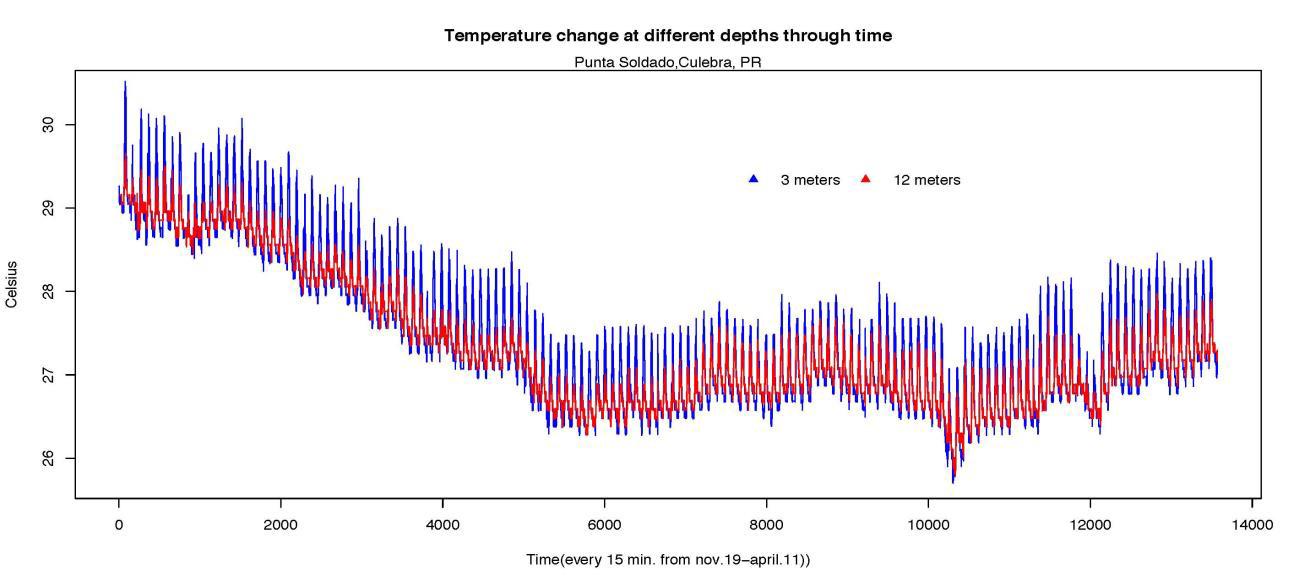Curriculum
DOI:https://doi.org/10.1128/jmbe.v22i1.2253C



DOI:https://doi.org/10.1128/jmbe.v22i1.2253C


JuanS.Ramírez-Lugo,a CarlosToledo-Hernández,b IvonneVélez-González,c andClaudiaP.Ruiz-Diazb,d aDepartmentofBiology,UniversityofPuertoRico,RíoPiedrasCampus,SanJuan,PuertoRico,USA00925 bSociedadAmbienteMarino,SanJuan,PuertoRico,USA cDepartmentofGraduateStudies,SchoolofEducation,UniversityofPuertoRico,RíoPiedrasCampus,SanJuan, PuertoRico,USA dDepartmentofEnvironmentalSciences,UniversityofPuertoRico,RíoPiedrasCampus,SanJuan, PuertoRico,USA
Thereismountingevidencetosupportthatstudentswhoparticipateinscientificresearchexperiencesare morelikelytocontinueontoadvanceddegreesandcareersinscience,technology,engineering,andmathematics(STEM).Tointroducemorestudentstothebenefitsofresearch,wehavedrawnonanongoing projectaimedatunderstandinghowtheCaribbeanstaghorncoral Acroporacervicornis respondstoenvironmental fluctuationstodevelopasemester-longcourse-basedundergraduateresearchexperience (CURE),entitledCREARE(CoralResponsetoEnvironmentAuthenticResearchExperience).Themain modeofinstructioninCREAREisthroughtopicmodules,andcourseevaluationisachievedthroughwritingassignments.StudentsinCREAREperformexperimentsinthelaboratorytomeasuretheabundance ofphoto-protectiveproteinsincoraltissuefromsamplescollectedatdifferentdepthsandatdifferent timesoftheyearandanalyzeenvironmentaldatausingtheRprogramminglanguage.CREAREparticipantshavecontributedtotheprogressoftheresearchprojectbygeneratingnoveldataandmaking improvementstoexperimentalprotocols.Furthermore,pre-andpost-courseassessmentofcontent knowledgerevealedthatstudentsperformsignificantlybetteronawrittenexamafterparticipatingin CREARE,whilealsodisplayingappreciableshiftsinattitudestowardscienceinstudentperceptionsurveys. Inaddition,throughqualitativeanalysisoffocusgroupinterviews,wegatheredevidencetosuggestthat mediatingvariablesthatpredictstudents’ persistenceinsciencearebolsteredthroughourapplicationof theCUREmodality.Overall,CREAREcanserveasamodelfordevelopingmoreresearch-basedcourses thatsuccessfullyengagestudentsinscientificresearch.
Undergraduateresearchexperiences(UREs)havebeen prescribedbymanyasthemeanstoimprovestudentperformanceandincreasethelikelihoodofastudentpursuing advanceddegreesandacareerinSTEM(1–3).Thereported impactsattributedtoUREsdisproportionatelybenefitstudentsfromhistoricallyunderrepresentedgroupsinscience, asegmentofthepopulationwhoseenrollmentinSTEM programshasbeensteadilyincreasingoverthepastdecade
AddresscorrespondencetoDepartmentofBiology,Universityof PuertoRico,RíoPiedrasCampus,SanJuan,PuertoRico,USA 00925.Phone:787-764-0000,ext.88068. E-mail:juan.ramirez3@upr.edu.
Received:17August2020,Accepted:20February2021, Published:31March2021
butwhoalsoabandonSTEMdegreesatahigherratethan anyothergroup(4,5).Traditionally,theengagementof undergraduatestudentsinresearchhasbeenthroughoneon-oneapprenticeships,whicharelimitedintheirofferingdue toa finiteamountofresearchfaculty.Morerecently,higher inclusionofstudentsintoresearchhasbeenachievedthrough theintegrationofresearchintocoursesthroughthepracticeof course-basedUREs,orCUREs.Thismodalityprovidesopportunitiestoalargernumberofstudentsenrolledinacoursewho subsequentlyreportmanyofthesamebenefitsassociatedwith researchinternships,suchasincreasedself-efficacy,enhanced scientificidentity,andcareerclarification(6–9).
CUREsofferampleopportunitiesforlearningandskill development,therebyfosteringbeliefsinstudentsthatthey candowellandobtainapositiveoutcomeforengagingin researchandthereforecontinueacareerinscience(10–11). Thesebenefitsarepartlyexplainedbyself-efficacytheory,which positsthatanindividual’sbeliefsintheircapabilitiestoexecutea
Copyright©2021Ramírez-Lugoetal.https://creativecommons.org/licenses/by-nc-nd/4.0/Thisisanopen-accessarticledistributedunderthetermsofthe CreativeCommonsAttribution-NonCommercial-NoDerivatives4.0 Internationallicense Volume22,Number1
courseofactionandreachaspecificgoalarisefromparticipationinactivitieswheretheyviewthemselvestobeefficacious andinwhichtheyanticipatepositiveoutcomes(12–14).Inadditiontoresearchself-efficacy,scientificidentityandtheendorsementofvaluesassociatedwiththescientificcommunityhave beenshowntomediatetheintegrationofstudentsintoscience(3,4,15–18).Theconcatenationoftheparticipant’ s senseofbeliefinher/hiscapacitieswiththeiridentification withandinternalizationofthecollectivevaluesofacommunityhasbeentermedthetripartiteintegrationmodelofsocial integration(TIMSI)andhasbeensuccessfullyusedfordescribinghowstudentsbecomemoreengagedwithscience,particularlystudentsfromgroupshistoricallyunderrepresentedin STEM fields.AccordingtoTIMSI,whenastudentassumesthe identityofascientistandreportsfeelinglikeascientist,sheor heismorelikelytopursueacareerinscience(15).Hence, wesetouttodevelopaCUREwherestudentsarepresented withopportunitiestosuccessfullyengageinscientificresearch andtointernalizethevaluesofthescientificcommunity throughparticipationinaresearchprojectthatisbothlocally relevantandofglobalimportance.
Globalclimatechangeishavingaprofoundandpotentially devastatingeffectonmanymarineenvironments,including coralreefecosystems.Caribbeanreefcorals,includingthe once-commonscleractiniancoral Acroporacervicornis,havesufferedunprecedentedmortalityduetoclimatechange–related stressors,suchasincreasingseasurfacetemperature(SST) andsolarradiation(SR)(19,20).RisingSSTandincreasedSR arephysiologicalstressorstomarineorganisms,whichwhen severemightjeopardizevitalfunctionssuchasgrowth,reproduction,andthecapacityto fightdiseases.Since2006, A.cervicornis hasbeenlistedasathreatenedspeciesthroughoutallofitsrange (theCaribbeanSeaandtheAtlanticOceannearBahamasand Florida)undertheInternationalUnionforConservationsof Nature(IUCN)RedListandtheU.S.EndangeredSpeciesAct (ESA);thus,itsrecoveryhasbecomeamajorpriorityfortropical Atlanticnationsandconservationgroups(21,22).Coralsrelyon multipleresponsestothermalandirradiationstress,includingthe increasedsynthesisofphotoprotectivepigmentssuchas fluorescentproteins(FPs)andmelanin(23–26).Therefore,measuring theabundanceofFPsandtheactivityofenzymesinvolvedinthe synthesisofmelaninfromthetissueofcoralsgrowingunderdifferentenvironmentalconditionsservesasanindirectmeasurementofthestressenduredbyindividualcolonies.Furthermore, correlatingproxymeasuresofstresstolong-termenvironmental monitoringdataofSSTandSRwillprovideinsightsintounderstandinghow A.cervicornis coloniesarerespondingtoachanging environmenttoultimatelyhelpguidefuturecoralpropagation andrestockingefforts.
Inanefforttointroducemoreundergraduatestudents ataHispanic-servinginstitution(HSI)tothebenefitsof researchexperiences,wehavedrawnuponanongoing long-termresearchprojectaimedatunderstandinghowthe Caribbeanstaghorncoral A.cervicornis respondstoseasonal fluctuationsofSSTandSRtodevelopaCURE.ThesemesterlongcourseisentitledCREARE,anacronymforcoralresponse
toenvironmentauthenticresearchexperience,andalsobecause oftheLatinverbcreare,meaning “Icreate,make,produce,” whichreflectstheintentionofhavingstudentscreatenewknowledgetoaddressascientificallyrelevantquestionthroughparticipationinthecourse.Here,wedescribetheconsensusdesignof CREAREafterthreeiterationsandshareassessmentdatafor oneofthethreecohortsofstudentswhohaveparticipated.
CREAREisofferedasanelectivecourseforstudentsinthe CollegeofNaturalScienceswhohavecompletedatwo-course introductorysequenceinBiology,atwo-courseintroductory sequenceinChemistry,andanintroductorycourseinStatistics. Studentsareexpectedtohaveuniversity-levelknowledgeofbiodiversityanditsimportance,naturalselection,theimpactofbiotic andabioticfactorsonpopulations,structureandfunctionofmacromolecules,andenzymesandtheiractivity.Boththeintroductorybiologyandchemistrycoursesatourinstitutionhavealaboratorycomponent;therefore,studentsarealsoexpectedtohave experiencewiththeapplicationofthescientificmethod,handling biologicalspecimensandchemicalcompoundsandtheproper executionofprotocols.Inaddition,participantsareexpectedto knowhowtomakemeasurementsandobservationsaccurately, analyzeandsummarizequantitativedatausinggraphs,differentiatebetweendependentandindependentvariablesandusedescriptivestatisticssuchasmeasuresofcentraltendency.Mostof thestudentswhoparticipateinthecoursearesophomoresand juniorswithvaryinglevelsofexposuretoscientificresearchoutsideoflaboratorycourses,fromnopriorresearchexperienceto onefullyearofresearchexperience.
Allstudentsandfacultymeetformallyonceaweekfor3h duringa16-weeksemester(Table1).Afterthe firstintroductory meetingwherelaboratorysafetyguidelinesarediscussed (Appendix1),studentsareexpectedtoengageincourse-related activitiesforanadditional3hperweek.Theseactivitiesinclude additionaltimeinthelaboratorytoperformexperimentsandanalyzedata,reviewliterature,and/orworkonwritingassignments. Additionalmeetingtimesarecoordinatedwiththeinstructional staffbasedonavailability.
Thelearningobjectivesandsupportingactivitiesare presentedinFig.1.UponcompletionofCREARE,students areexpectedto:
1.Describetherelationshipbetween fluctuationsin environmentalconditionsandchangesinthephysiologyof thestonycoral A.cervicornis
Timelineofactivitiesduringa16-weeksemester
1 Introduction
Assessment:Pre-coursesurveys+examinationofcontent
2 Biochemistrymodule
3
4
Writingassignment:Assignshortliteraturereview(Introduction)
DataanalysismoduleI
Writingdeliverable: Introduction
DataanalysismoduleII
Writingassignment:Discuss Introduction withinstructor
5 Fieldtrip(weatherpermitting)
Writingdeliverable:Revised Introduction + MaterialsandMethods 6 Sciencewritingmodule
Writingassignment:Discuss MaterialsandMethods
7 Labwork
Writingassignment:DiscussRevised Introduction and MaterialsandMethods
8 Labwork
Writingdeliverable: Figures forenvironmentaldataanalysis
9 Ecologymodule
WritingAssignment:Discuss Figures forenvironmentaldataanalysis 10 Labwork
Writingdeliverable: Results sectionofavailabledatawith Figures 11 Labwork
Writingassignment:Discuss Results 12 Labwork
Writingassignment:Revised Introduction,MaterialsandMethods and Results 13
Writingdeliverable: Discussion Presentation:PresentsketchofFinalPresentation 14
Writingassignment:Discuss discussion
Presentation:DiscussFinalPresentation 15
Finalpresentation
Writingassignment:Discuss FinalReport 16
Writingdeliverable: FinalReport Assessment:Post-CourseSurveys+ExaminationofContent
2.Developskillsandcompetenciestorecorddataand analyzeresults.
3.Demonstrate fluencyindataprocessingandanalysis oflargedatasetsanditsapplicationtouncoverrelationshipsinbiologicalsystems.
4.Effectivelycommunicatetheresultsofresearchto peersandmembersofthescientificcommunity,through writtenreportsandoralpresentations.
5.Reportincreasesinself-efficacy,enhancementsinscientificidentity,andclarificationofcareerintentions.
Theworkflowofexperimentsfromsamplecollection todataanalysisisprovidedinFig.2.Priortothebeginning
ofthecourse,membersofourresearchteamcollected coralsamplesfromcoralnurserieslocated3and12mof depthduringthespringandfall(Appendix2).Thestudysite isinPuntaSoldado,Culebra,PuertoRico(N18°16 0 50.7 W65°17 0 14.6)andismanagedbythelocalnonprofitorganizationSociedadAmbienteMarino.Collectedcoralfragmentsareplacedintubesandfrozeninliquidnitrogenimmediatelyuponretrieval,transportedtothelaboratory,and storedina 80°Cfreezeruntilfurtheranalyses.The DepartmentofNaturalandEnvironmentalResourcesof PuertoRicoapprovedthesamplingprotocolunderpermit numberDRNA:2016-IC-175issuedtoCTH.Smallgroups ofstudents(twotothreestudentspergroup)areassigned asetofcoralfragmentscollectedataspecificdatecoming fromoneoftwodepths(3and12m)foranalysis.Students areinstructedtoextracttissuefromfrozencoralfragments

FIGURE1.Learningobjectivesandsupportingactivities.The fivemainlearningobjectives(fourcirclesinthemiddleandtrapezoidon top)areachievedthroughengagedparticipationinlaboratory, fieldand insilico workandaresupportedbyTopicalModules(Ecology, Biochemistry,DataAnalysis,andScientificWriting),WritingAssignments,andaFinalPresentation.Arrowsfromsupportingactivities (bottomrow)toobjectives(middlerow)reflecthowtheseactivitiessupportthelearningobjectivesandultimatelystudent development(toprow).
(Appendix3)andusetheextractstoperformbiochemical assaystomeasuretheamountofphotoprotective fluorescentproteins(FPs)intheextractedtissue(Appendix4)and alsomeasuretheactivityoftheenzymephenoloxidase(PO), whichisinvolvedinthesynthesisofmelanin(Appendix5).In parallel,studentsperformstatisticalanalysisonenvironmentaldata(Appendix6)thatisprovidedbytheinstructors. ThesedataareforSSTandSRinthecollectionsitesinthe monthspriortosamplecollection.Finally,studentscompare thebiochemicalparametersbetweentheirsamplesatdifferentdepthsandseasonsandthecorrespondingenvironmental

FIGURE2.Experimentalwork fl ow,fromsamplecollectionto dataanalysis.
conditions.Togain fluencyandpracticeinthetechniques requiredtoperformalltheanalysesdescribedabove,studentsparticipateinaseriesofmodules.
Throughthebiochemistrymodule(Appendix7),studentswereintroducedtobasiccoralphysiologyandthe responsesoftheseorganismstotemperaturestressandsolarradiation.Themainfocuswasontheroleoftheenzyme POintheproductionofmelanin(25,26)andthephotoprotectivequalitiesof fluorescentpigmentsincorals(23,24). Herein,laboratoryruleswerediscussedandinstruction givenontheuseofbasiclaboratoryequipmentandhandling ofreagents.
Thtwo-partdataanalysismodule(Appendix8)providedguidedpracticeontheapplicationofstatisticstolarge datasetsofenvironmentaldatausing R:ALanguageand EnvironmentforStatisticalComputing (27).Inadditionto becomingfamiliarwiththeuseofRprogramminglanguage, themoduleincludedgeneraldiscussionontopicsofstatisticalanalysistechniquesusedinpopulationecologyandthe integrationofmathematicalandstatisticalanalysistobiologicalresearch.WithinR,studentslearnedaboutenvironmentsetup,basiccommands,scriptsyntax,uploadingand
reading fileswithdifferentextensions,performingdescriptive statisticalanalyseswithsmalldatasets,anddatavisualizations. Thismodulewasinitiallyofferedasasingle3-hsession.Based onstudentfeedbackfromthe firstiterationofthecourseand perceiveddifficultieswithR,wefounditnecessarytoextend themoduletotwo3-hsessionofferedinsuccessiveweeks.
Thesciencewritingmodule’smainobjective(Appendix9) wastodevelopthetoolstocommunicatetheresultsobtained tostakeholdersoutsideoftheclassroom.Thesestakeholders arelocalcoralreefresearchers,membersofcommunity-based conservationgroups,andgovernmentagencies.Topicsdiscussedincludesentenceconstruction,organizationofideas withinaparagraph,scientificwordingandthefundamental partsofaresearchmanuscript.Themodulewascentered aroundanin-classactivitywherestudentswriteaparagraph usinggivenkeywordsfollowedbypeer-to-peercritiqueofanonymizedparagraphsproducedintheinitialexercise.
Theecologymodule(Appendix10)aimedtointroduce studentstothebasicecologyofcoralreefs,reef-building corals,associatedorganisms,andtheirimportanceto humankind.Themainfocuswasonthemajorstressors, bothhuman-derivedandnatural,thatarecurrentlythreateningtheexistenceofcoralreef.Themoduleisintendedto givestudentsabroadercontextoftheworkthattheyperformedthroughoutthesemester.Thisinformationiskey forsubsequentcommunicationofresearch findings.
Studentsareprovidedaccesstoafolderonacloudbasedsharingservicewiththerequiredreadingmaterial andalsoinstructedtodownloadandinstallR(Appendix8). Throughthesharedfolder,studentsreceiveexperimental protocolsandsubmitallcoursedeliverables.Studentswork togetherinsmallgroups(twotothreestudentspergroup). Collaborationandco-workingamongthegroups,especially fordataanalysis,arestronglyencouraged.
Duringthe firstmeetingwithstudents,projectobjectives werediscussed,bothintermsofeducationaloutcomesand researchobjectives.Duringthis firstmeeting,pre-coursesurveysandevaluations,laterusedtomeasurelearninggainsand shiftsinattitudestowardscience,areadministered.Duringthe secondweek,studentsbeginworkrelatedtotheproject throughparticipationinthe firstoffourtopicalmodules. Table1presentshowtopicalmodulesandothersupporting
activitiesaredistributedthroughoutthesemester.Thetopical modulesaredesignedtoexposestudentstotheunderlying theoreticalprinciplesoftheexperimentaldesignandtoreinforcefoundationalconceptsthatareimportantforsuccessful executionofexperimentsandinterpretationofdata(Fig.1 andAppendices7to10).Activelearningmethodologies,such aspeer-to-peerlearningandguidedinquiry,areusedinthe topicalmodulestoexplore,explain,andevaluatetopicsrangingfromoverarchingprinciplestospecificdetailsrelevantto theproject(28).Instructorsdevoteatleastanadditional6h perweekforcollectingsamples,preparinglaboratoryreagents, supervisingstudentexperiments,answeringstudentquestions, readingandprovidingfeedbacktostudentsonwritingassignments,andpreparingandanalyzingdatafromstudentassessment.Establishingadefinedtimeperiodduringtheweekto handletheseadditionaltaskswascriticaltominimizetheburden oninstructor’stime.
Studentachievementoftheestablishedlearningobjectivesareevaluatedmostlythroughasemester-longprocess ofwritingandrevision,inwhichstudentsprogressivelyconstructareportmodeledafteraresearcharticle(Table2). Thisgradualcraftingofareportmirrorsthedeveloping engagementofthestudentsintheresearchproject:asstudentsbecomefamiliarwiththeresearchliterature,they writeanIntroduction;uponperformingexperiments,they writeMaterialsandMethods;astheygatherandinterpret data,theywriteaResultssection;andastheyinterpretand contextualizetheresults,theywritetheDiscussion.Upon completionofeachstageoftheprojectandwritingthecorrespondingsectionofthereport,studentsreceiveinputand recommendationsfrominstructorsoneachsection (WritingDeliverablesinTables1and2).Agradingrubric usedinotherlaboratorycoursesinourschoolisusedasa formativeassessmentandevaluationtool(seeAppendix11 andAppendix12forexamplesofstudentdata).
Inadditiontobeingusedasameansforstudentevaluation(Table3),writingassignmentsanddeliverablesfulfillthe criticalobjectiveofimprovingstudents’ abilitytoeffectively communicatetheresultsofresearchtopeers,thescientific community,andthepublic.Asecondwayofassessingstudent learningisthrough finaloralpresentationsthatarepresented toinstructors,peersandotherresearchersoncampus. Duringoneofthesemestersthatthecoursewasoffered,a localcoralreefsymposiumwasheldnearourcampus.Allstudentsenrolledinthecourseattendedthesymposiumandalso submittedanabstract,whichwasrequiredforevaluationasa writingdeliverableduringthatsemester.Agroupofthreestudentsgaveanoralpresentationtodescribetheprojecttoall symposiumparticipants(Appendix13).Toensurethatstudentsweresupportedinthedevelopmentoftheirscientific presentationskillsandwerepreparedforthepresentation,we providedopportunitiestopracticeinclassandoffered
TABLE2
Alignmentbetweenlearningobjectivesandcourseassessment
Describetherelationshipbetween fluctuationsinenvironmental conditionsandchangesinthephysiologyofthestonycoral A. cervicornis
Developskillsandcompetenciestorecorddataandanalyzeresults.
Demonstrate fluencyindataprocessingandanalysisoflargedatasets, anditsapplicationtouncoverrelationshipsinbiologicalsystems.
Effectivelycommunicatetheresultsofresearchtopeersandmembers ofthescientificcommunity,throughwrittenreportsandoral presentations.
Reflectincreasedself-efficacyinresearch,clarifycareergoalsand developtheirscientificidentity.
extendedcommentsonpresentations(Appendix14).Other coralreefresearchersandmembersofconservationgroups wereinattendanceforthispresentation.Althoughthiswasa uniquescenario,itclearlyevidencedthatstudentsfulfilledthe learningobjectiveofeffectivelycommunicatingtheresultsof researchtopeersandmembersofthescientificcommunity.
CREAREparticipantsengageindifferentaspectsofthe experimentalworkflowincludingtissueextraction,estimation ofproteinconcentrationsandenzymeassays.Participants alsoanalyzeenvironmentaldata,aswellasusestatisticalanalysistointerprettheresultsfrombiochemicalexperiments (Fig.2).Fig.3andAppendices12and13showsampledata generatedbystudentsandusedinwrittendeliverablesand presentations.
Studentsreceivedinstructiononlabsafetyonthe firstday ofthecourse(Appendix1)andwererequiredtocompletetwo
TABLE3
Gradingandevaluation
Writingdeliverable:Introduction
ContentExam
FinalReport
FinalPresentation
Writingdeliverable:Figuresforenvironmentaldataanalysis
Writingdeliverable: Figures forenvironmentaldataanalysis
Writingdeliverables
FinalReport
FinalPresentation
CUREsurvey
Focusgroupinterviews
onlinecoursespriortobeginningworkinthelaboratory,asixpart “OnlineEthicsResearchCourse” fromtheOfficeof ResearchIntegrityandalaboratorysafetycoursefromthecampusOfficeforEnvironmentalProtectionandOccupational Safety.Furthermore,studentsareinstructedabouttheproper useoflaboratoryequipmentandhandlingofchemicalreagents usedforexperiments.Noneofthereagentsusedforthe experimentsposeanyserioushealthandsafetyconcerns.
CREAREwasofferedasanelectivecourseforthree consecutivesemesters,fall2016,spring2017,andfall2017. ThreecohortsofsixtoninestudentsparticipatedinCREARE andsuccessfullyperformedbiochemicalexperimentsinthelaboratory,analyzedenvironmentaldatausingtheRsoftwareenvironment,anddisseminatedtheresultsofthisresearchproject thataddressestheeffectofclimatechangeonacriticallyendangeredreef-buildingcoral.Oncethecoursecontentandpracticeswereoptimizedwithinits firstiteration(cohort1),we gatheredassessmentandperceptiondatafromcohorts2and3. Weareonlypresentingresultsforcohort2sincethethirdsemesterthatthecoursewasofferedwasdisruptedbytwosuccessivecategory4hurricanes(HurricanesIrmaandMaría), whichresultedinmajordisruptionstoacademicactivitiesand researchefforts.
Thegathereddataand fi guresgeneratedbystudents inCREAREserveasevidenceofstudentlearning(Table2).


FIGURE3.Sampleofstudent-generateddata.(Top)Fluorescenceemissionspectrafortissueextractsfromhealthylooking A.cervicornis samplescollectedfromPuntaSoldado,Culebra,PuertoRico(18°19 0 01N65°17 0 24W).Fluorescencebetweenandwithinsampleswas normalizedtototalproteinconcentration.SampleswerecollectedonNovember16,2016from3and12m.(Bottom)SST(°C)at3m and12matsamplingsite.DataweretakenusingaHoboPendanttemperature/lightdatalogger64k-UA-002-64(OnsetCompany)to threedecimalplaces.Datawerecollectedevery15minfortheperiodbetweenNovember19,2016,andApril11,2017.
Theseproductsdemonstrate fl uencyinrecording,analyzingandprocessingdatafromlargedatasetsofbiochemical andenvironmentaldata(Fig.3,Appendices12and13). Furthermore,thesestudent-generateddatahave
contributedtolargerdatasetsthatwillbeincludedina researchmanuscriptcurrentlyinpreparation.
TheimpactofCREAREonstudentlearninggainsand attitudestowardsciencewasmeasuredusingtheClassroom

FIGURE4.Studentperformanceoncontentexam(N =9).Studentperformanceon14-itemcontentexamadministeredpriorto participationinCREARE(PRE)andimmediatelyaftercompletingthecourse(POST).Shadedcirclesrepresenttheindividualscoresof eachstudent. P valueforapairedtwosample t testrevealedthestatisticalsignificanceofthedifferencebetweenaggregatedPREand POSTexamscores.
UndergraduateResearchExperienceSurvey(6).Students reportedthatparticipationinCREAREledtosignificantgains inreadinessfordemandingresearch,understandingthatscientificassertionsrequiresupportingevidenceandunderstandinghowknowledgeisconstructed.Furthermore,studentsreportedimprovedattitudestowardscienceand signifi cantperceivedincreasesintheirabilitiestocontributetoaresearchprojectandtocollect,analyze,andpresentdata(datanotshown).Studentself-reportingoften holdslittlecorrelationtomeasurablelearninggainsorthe mechanismsdescribingwhatmakesCUREseffectiveat in fl uencinglearninggainsorcareerchoicebehaviors(2,9, 29).Toverifythatclaimsoflearningcorrelatetoacquisitionofcontentknowledge,studentswhoparticipatedin CREAREduringspring2017(N =9)weregivena14-item examtoassesstheirknowledgeabouttheunderlyingconceptsrelatedtotheresearchprojectbeforeandafterparticipation(Appendix15).Collectively,scoreswerehigher afterCREARE[mean,7.78;standarddeviation(SD),1.86] comparedtoscoresatthebeginningoftheexperience (mean,6.89;SD,2.02)(Fig.4).Thisimprovementin
studentperformancewithregardtocontentisstatistically signifi cant(t 8 =2.28, P= 0.02)andvalidatesstudentclaims oflearninggainsafterparticipationinCREARE.
Severallinesofevidencesuggestthatthebenefi tsof CUREs,beyondcontentacquisitionandtechnicalmastery, aretheincreaseofself-ef fi cacy,clarifi cationofcareer goals,anddevelopmentofascientifi cidentity(14–16,30). Topeerdeeperintothemechanismsthatmediatethe changesinstudentperceptionregardingtheirabilitiesto performscienti fi cresearchandimprovetheirviewasscientists,afocusgroupinterviewwascarriedoutwiththe samespring2017studentcohorttosurveywhichelementsoftheCUREexperienceareconsideredbyparticipantstobethemostimportantfortheirdevelopment. Audiofrominterviewswasrecordedandtranscribedto identifyphraseswithinthetextthatrepresentedstatementsorre fl ectionsbystudentsregardinghowtheexperienceimpactedtheirpersonalandprofessionaldevelopment(Appendix16).Phraseswithinthetextthatmade mentionofwhatstudentsperceivedasopportunitiesfor developmentwereclassifi edandgroupedintofour
TABLE4
Focusgroupinterviewemergentcategoriesandquotes
EmergentcategoryRepresentativequote
Definitionofcareertrajectory
Self-efficacy
Opportunitiesfordevelopmentof researchskills
Opportunitiesfordevelopmentof interpersonalrelationships
“ youdonotknow,reallywhatcareeryouwanttogotountilyoustartpracticingit”
“IthoughtthatIcouldnotdowhatIamdoing,sothenextthingIwanttodo,probably IcanalsodoitifIputeffortaswell,asithappenednow.”
“Atthebeginningoftheinvestigation,youknowverylittleaboutwhatyouare investigating,andthen,intheend,yougo,youknowsomuch,andthenyoucontinue branchingout,andyouwanttoknowmoreaboutsomethingthathastodowithit.”
“Itchangesyourperspectiveabittoo,becausesometimesyouthinkthatprofessors arelike,like,someonelikebeyondhuman,theydonoteatoranything wespenda lotoftime,uh,withthemandyourealizethat,well,theyalsohavetheirdoubtsand thattheyalsolearnfromussomethingsaswell,buttheyalsolearnthingswithusand that,andthatthey,inreality,theyarebasicallythereforus.”
emergentcategoriesthatmostlyrelatedtothevaluation oftheexperienceasanopportunitytodevelopprofessionallyandtodefi neacareertrajectory(Table4).Asone studentputitsuccinctly: “Youdonotknow,reallywhatcareeryouwanttogotountilyoustartpracticingit.” Within thefourcategories,codesthatre fl ectedimprovementsin self-ef fi cacyandskilldevelopmentwereabundant,aswere thosethathighlightthevaluethatstudentsplaceonthe developmentofinterpersonalrelationshipsasafactorof highimpact.Withinthelattercategory,thereweremultiplementionsofmentoring,teamwork,andashiftintheir perceptionofpositionswithinascienti fi chierarchy (Table4andAppendix16).
Thecategoriesthatemergedfromouranalysisoffocus groupinterviewsmirrorthosedescribedintheTIMSImodelof socialintegration(15).Hence,wesearchedforphrasesassociatedwiththethreemodesoforientationdescribedinthe TIMSIframeworkandfoundahighfrequencyofcodesrelated toruleorientation(self-efficacy),roleorientation(scientific identity),andvalueorientation(internalizationofscientificcommunityvalues).Phrasesassociatedwiththedevelopmentofselfefficacyappearwiththehighestfrequencyamongallvariables associatedtoscientificintegration(Fig.5),reinforcingtheimportanceofthedevelopmentofself-efficacyasarobustmediator ofscientificintegration(14–16).Theseresults,takentogether withthevalidatedgainsinknowledge,demonstrated fluencyin dataanalysis,andimprovedcompetenceincommunicating results,inadditiontothehighvaluationoftheexperienceby participants,suggestthatCREAREiseffectiveinstrengthening perceptionsofsuccessandbelonging,whicharepredictiveof scientificintegrationbystudentsfromhistoricallyunderrepresentedgroupsinscience.
Possiblemodifications
Thesemester-longCUREdesignpresentedhere,with topicalmodulesasamainmodeofinstructionandwriting deliverablesforassessmentandevaluation,canbeadaptedasa
frameworkforintegratingresearchprojectsintocourses. OnlyoneoffourlearningobjectivesinCREAREisspecificto theresearchproject,anditcanalternativelybereplacedwith thespecificaimofotherresearchprojectsthatsurveythe impactoftheenvironmentonanorganism,frombehaviorto molecularbiology.Likewise,modulessuchastheData AnalysisModulecanbeusedasanindividualexercisetodevelopstudents’ fluencyinanalyzingenvironmentaldatawithin acourseoraCURE.Thiscanincludeinstanceswhereopen sourcedatasetsaccessibleviatheInternetareusedfordata analysisaswellascarryingouttheexercisesusingotherstatisticalprograms(seenotesaboutinstructioninAppendix8). Similarly,theScienceWritingmodule(Appendix9)canbe usedinanyothercoursewherescientificresultsmustbecommunicatedthroughwriting.
Itmeritsmentioningthatthemainstruggleforstudents inCREAREwasusingR,especiallywhenapplyingittoreal worldcircumstancesandlargedatasets.Spendingmore time(twomodulesratherthanone)tointroducestudents toRandstartingwithasmalldatasetforthemtowork withbeforehandlingtherealdatawereveryhelpful. Furthermore,keepingstudentsengagedaftersetbacksin experimentsand/ordataanalysisisalwaysachallenge.On occasion,wehadstudentsswitchtaskstoavoidexcessive frustration,specificallywithdataanalysisinR.
TheworkdonebystudentsinCREAREhasbeen instrumentaltotheprogressofourresearchproject,leadingtotherefinementofresearchprotocolsforfuture experimentsandthegenerationofscientificallyrelevant data.Theseoutcomes,togetherwithourassessment resultsindicatethatthroughourapplicationoftheCURE modalitystudentsshowappreciablegainsinknowledge, fluencyindatamanagement,andgainopportunitiestocommunicatetheresultsoftheirresearch.Takentogether,our

FIGURE5.FrequencyofcategoriesassociatedwithTIMSIframework.Focusgroupinterviewswerescoredforthefrequencyof mentionofcategoriesrelatedtothethreeorientingfactorsfortheintegrationofunderrepresentedminoritystudentsintoscienceof theTIMSI.Identityisred,self-efficacyisgreen,andvalueisblue.
workindevelopingandimplementingCREAREoffersfurthersupportoftheeffectivenessofCUREsinintegrating cutting-edgeresearchintocoursestherebybroadeningthe positivebenefitsofresearchexperiencestoamorediverse populationofstudents.
Appendix1:Laboratorysafetyguidelines
Appendix2:Coralsamplingprotocol
Appendix3:Coraltissueextractionprotocol
Appendix4:BiochemicalexaminationofFPprotocol
Appendix5:BiochemicalexaminationofPOenzymatic activityprotocol
Appendix6:Environmentalmeasurementprotocol
Appendix7:Biochemistrymodule
Appendix8:Dataanalysismodule
Appendix9:Scientificwritingmodule
Appendix10:Ecologymodule
Appendix11:Rubrictoevaluatewrittenreports
Appendix12:Examplesofstudent-generateddataandreports
Appendix13:Studentpresentationatlocalcoralreef symposium
Appendix14:Exampleoffeedbackonstudentpresentation
Appendix15:14-itemcontentexam
Appendix16:Transcriptoffocusgroupinterview
WethankallthestudentsthatparticipatedinCREARE fortheirpatienceandwillingnesstoconfrontthemany challengesthatwerefaced.Wearethankfulforthesupport providedbyDavidLopattoandLeslieJaworskifortheuseof theCUREsurvey.WeareforeverindebtedtoAbigailZoger andMollySchreyforsendingsolarequipmentthatkeptus workingafterHurricaneMaría.Financialsupportwasprovided bytheUniversityofPuertoRico,RioPiedrasCampusOfficeof Research,andGraduateStudiesInstitutionalResearchFund (FIPI)andNationalOceanicandAtmosphericAdministration’ s
(NOAA),NationalSeaGrantProgramGrantnumber NA14OAR4170068andProjectnumberR/105-02-16.The UniversityofPuertoRico,RioPiedrasInstitutionalCommittee fortheProtectionofHumanSubjectsinResearch(CIPSHI,IRB 00000944)approvedourprotocolwithnumber1617-089for workonthisproject.Theauthorshavenoconflictsofinterest todeclare.
1.NationalAcademiesofSciencesEngineering,Medicine.2017. UndergraduateresearchexperiencesforSTEMstudents:successes,challenges,andopportunities.TheNationalAcademies Press,Washington,DC.
2.LinnMC,PalmerE,BarangerA,GerardE,StoneE.2015. Undergraduateresearchexperiences:impactsandopportunities.Science347:1261757–1261757. https://doi.org/10.1126/ science.1261757
3.SeymourE,HunterAB,LaursenSL,DeantoniT.2004. Establishingthebenefitsofresearchexperiencesforundergraduatesinthesciences: first findingsfromathree-yearstudy. SciEd88:493–534. https://doi.org/10.1002/sce.10131
4.EstradaM,BurnettM,CampbellAG,CampbellPB,Denetclaw WF,GutiérrezCG,HurtadoS,JohnGH,MatsuiJ,McGeeR, OkpoduCM,JoanRobinsonT,SummersMF,WernerWashburneM,ZavalaME.2016.ImprovingunderrepresentedminoritystudentpersistenceinSTEM.CBELifeSciEduc15:1–10.
5.NationalScienceBoard.2016.Scienceandengineeringindicators2016.NatlSciBoard897.
6.LopattoD.2007.Undergraduateresearchexperiencessupportscience.CBELifeSciEduc6:297–306. https://doi.org/10 .1187/cbe.07-06-0039
7.AuchinclossLC,LaursenSL,BranchawJL,EaganK,GrahamM, HanauerDI,LawrieG,McLinnCM,PelaezN,RowlandS, TownsM,TrautmannNM,Varma-NelsonP,WestonTJ,Dolan EL.2014.Assessmentofcourse-basedundergraduateresearch experiences:ameetingreport.CBELifeSciEduc13:29–40. https://doi.org/10.1187/cbe.14-01-0004
8.ShafferCD,AlvarezCJ,BednarskiAE,DunbarD,Goodman AL,ReinkeC,RosenwaldAG,WolyniakMJ,BaileyC,Barnard D,BazinetC,BeachDL,BedardJEJ,BhallaS,BravermanJ,Burg M,ChandrasekaranV,ChungH,ClaseK,DejongRJ,Diangelo JR,DuC,EckdahlTT,EislerH,EmersonJA,FraryA,Frohlich D,GosserY,GovindS,HabermanA,HarkAT,HauserC, HoogewerfA,HoopesLLM,HowellCE,JohnsonD,JonesCJ, KadlecL,KaehlerM,KeySCS,KleinschmitA,KokanNP,Kopp O,KuleckG,LeathermanJ,LopilatoJ,MackinnonC,MartinezCruzadoJC,McneilG,MelS,MistryH,NagengastA,etal. 2014.Acourse-basedresearchexperience:howbenefits changewithincreasedinvestmentininstructionaltimeCBE. CBELifeSciEduc13:111–130. https://doi.org/10.1187/cbe-1308-0152
9.CorwinLA,GrahamMJ,DolanEL.2015.Modelingcoursebasedundergraduateresearchexperiences:Anagendafor futureresearchandevaluation.CBELifeSciEduc14:1–13.
10.ChemersMM,ZurbriggenEL,SyedM,GozaBK,BearmanS. 2011.Theroleofefficacyandidentityinsciencecareercommitmentamongunderrepresentedminoritystudents.JSoc Issues67:469–491. https://doi.org/10.1111/j.1540-4560.2011 .01710.x
11.RodenbuschSE,HernandezPR,SimmonsSL,DolanEL.2016. Earlyengagementincourse-basedresearchincreasesgraduationratesandcompletionofscience,engineering,andmathematicsdegrees.CBELifeSciEduc15. https://doi.org/10.1187/ cbe.16-03-0117
12.BanduraA.1986.Socialfoundationsofthoughtandaction:a socialcognitivetheory.Prentice-Hall,EnglewoodCliffs,NJ.
13.LentRW,BrownSD,HackettG.1994.Towardaunifyingsocial cognitivetheoryofcareerandacademicinterest,choice,and performance.JVocatBehav45:79–122. https://doi.org/10 .1006/jvbe.1994.1027
14.BanduraA.1997.Self-efficacy:theexerciseofcontrol.W.H. FreemanandCompanyAmericanPsychologicalAssociation, NewYork,NY.
15.EstradaM,WoodcockA,HernandezPR,SchultzPW.2011. Towardamodelofsocialinfluencethatexplainsminoritystudentintegrationintothescientificcommunity.JEducPsychol 103:206–222. https://doi.org/10.1037/a0020743
16.NadelsonLS,McGuireSP,DavisKA,FaridA,HardyKK,Hsu Y-C,KaiserU,NagarajanR,WangS.2015.AmIaSTEMprofessional?DocumentingSTEMstudentprofessionalidentity development.StudHighEduc5079:1–20. https://doi.org/10 .1080/03075079.2015.1070819
17.BangeraG,BrownellSE.2014.Course-basedundergraduate researchexperiencescanmakescientificresearchmoreinclusive.CBELifeSciEduc13:602–606. https://doi.org/10.1187/ cbe.14-06-0099.
18.Byars-WinstonA,RogersJ,BranchawJ,PribbenowC,Hanke R,PfundC.2016.Newmeasuresassessingpredictorsofacademicpersistenceforhistoricallyunderrepresentedracial/ethnicundergraduatesinscience.CBELifeSciEduc15:1–11.
19.Hoegh-GuldbergO,MumbyPJ,HootenAJ,SteneckRS, GreenfieldP,GomezE,HarvellCD,SalePF,EdwardsAJ, CaldeiraK,KnowltonN,EakinCM,Iglesias-PrietoR,Muthiga N,BradburyRH,DubiA,HatziolosME.2007.Coralreefs underrapidclimatechangeandoceanacidi fi cation.Science 318:1737–1742. https://doi.org/10.1126/science.1152509
20.AronsonR,and,PrechtWF.2001.White-banddiseaseandthe changingfaceofCaribbeancoralreefs.Hydrobiology460:25–38. https://doi.org/10.1023/A:1013103928980
21.NationalMarineFisheriesService.2015.Recoveryplanfor Elkhorm(Acroporapalmata)andStaghorm(A.cervicornis) corals.PreparedbytheAcroporaRecoveryTeamforthe NationalMarineFisheriesService,SilverSpringMaryland.
22.Mercado-MolinaAE,Ruiz-DiazCP,SabatAM.2015.Demographic anddynamicsoftworestoredpopulationsofthethreatenedreefbuildingcoral Acroporacervicornis.JNatConserv24:17–23. https:// doi.org/10.1016/j.jnc.2015.01.001
23.SalihA,LarkumA,CoxG,KühlM,Hoegh-GuldbergO.2000. Fluorescentpigmentsincoralsarephotoprotective.Nature 408:850–817. https://doi.org/10.1038/35048564
24.PalmerCV,ModiCK,MydlarzLD.2009.Coral fluorescent proteinsasantioxidants.PLoSOne4:e7298. https://doi.org/10 .1371/journal.pone.0007298.
25.PalmerCV,BythellJC,WillisBL.2010.Levelsofimmunity parametersunderpinbleachinganddiseasesusceptibilityof reefcorals.FASEBJ24:1935 – 1946. https://doi.org/10.1096/ fj.09-152447
26.PalmerCV,BythellJC,WillisBL.2011.Acomparativestudyof phenoloxidaseactivityindiseasedandbleachedcoloniesofthe coral Acroporamillepora.DevCompImmunol35:1098–1101. https://doi.org/10.1016/j.dci.2011.04.001
27.RCoreTeam.2017.R:alanguageandenvironmentforstatisticalcomputing.RFoundStatComput.
28.WoodWB.2009.Innovationsinteachingundergraduatebiology andwhyweneedthem.AnnuRevCellDevBiol25:93–112. https://doi.org/10.1146/annurev.cellbio.24.110707.175306
29.DiPiroJT.2010.Studentlearning:perceptionversusreality. AmJPharmEduc74:2010.
30.HunterA,LaursenSL,SeymourE.2007.Becomingascientist: theroleofundergraduateresearchinstudents’ cognitive,personal,andprofessionaldevelopment.SciEd91:36–74. https:// doi.org/10.1002/sce.20173